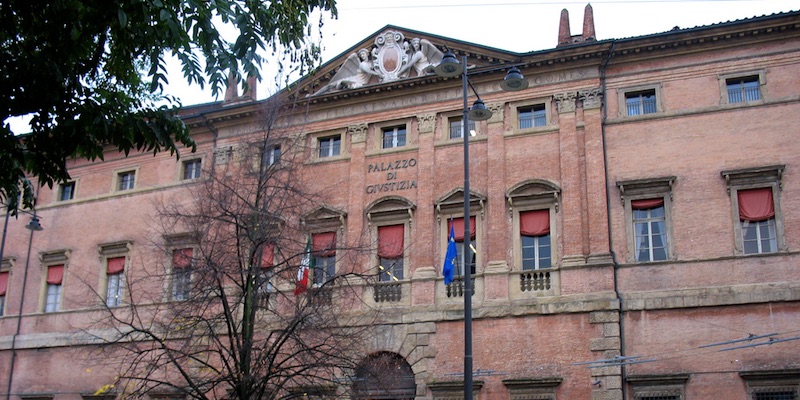The illustrious Ruini family, originally from Reggio Emilia, moved to Bologna in the early 16th century. The members of the family soon reached the senatorial ranks, thus deciding to call Andrea Palladio, a well-known architect, in order to have their new palace designed. Many local sources ascribe the design of the palace to the mentioned artist from Veneto even though, as a matter of fact, the building was made with local materials (bricks and sandstone) by local artists without the master's supervision - already dead – and it was considerably refined between the 17th and 19th centuries
In 1679 the palace was given to the Ranuzzi family who enlarged and further enriched it with many works of art, through which the palace became worthy of a top-ranked family.
The grand staircase with two elliptic ramps produces a strong spectacular effect, It is traditionally ascribed to Giovanni Battista Piacentini and was made by G. A. Torri, inspired by Bibiena. The allegorical stucco statues were added by F. Balugani around 1770. The Hall of the Court of Appeal, formerly Celebration Hall, was designed in the second half of the 18th century by Ferdinando Bibiena and decorated with allegorical statues by Giuseppe Maria Mazza, while the stucco decoration was made by G. Borrelli. The Gallery, also following a project by G. B. Piacentini, was officially inaugurated in 1727 and enriched the noble house of the Runuzzi, thus celebrating the fief of Porretta with frescoes by V. Bigari 'Allegorie dei Bagni di Porretta'. The last owner was Felice Baciocchi who, after working as a spectacle seller, rose to the princely ranks by marrying Elisa Bonaparte, Napoleon's sister. He called painters such as Antonio Basoli, Felice Giani and others to make nostalgic memories of his brother-in-law's regime revive in the palace rooms.
The palace has hosted the offices of the Court of Law until some years ago and currently houses the Court of Appeal of Bologna.
Are you a local? What do you think about Baciocchi Palace or Justice?
Login to suggest it!


